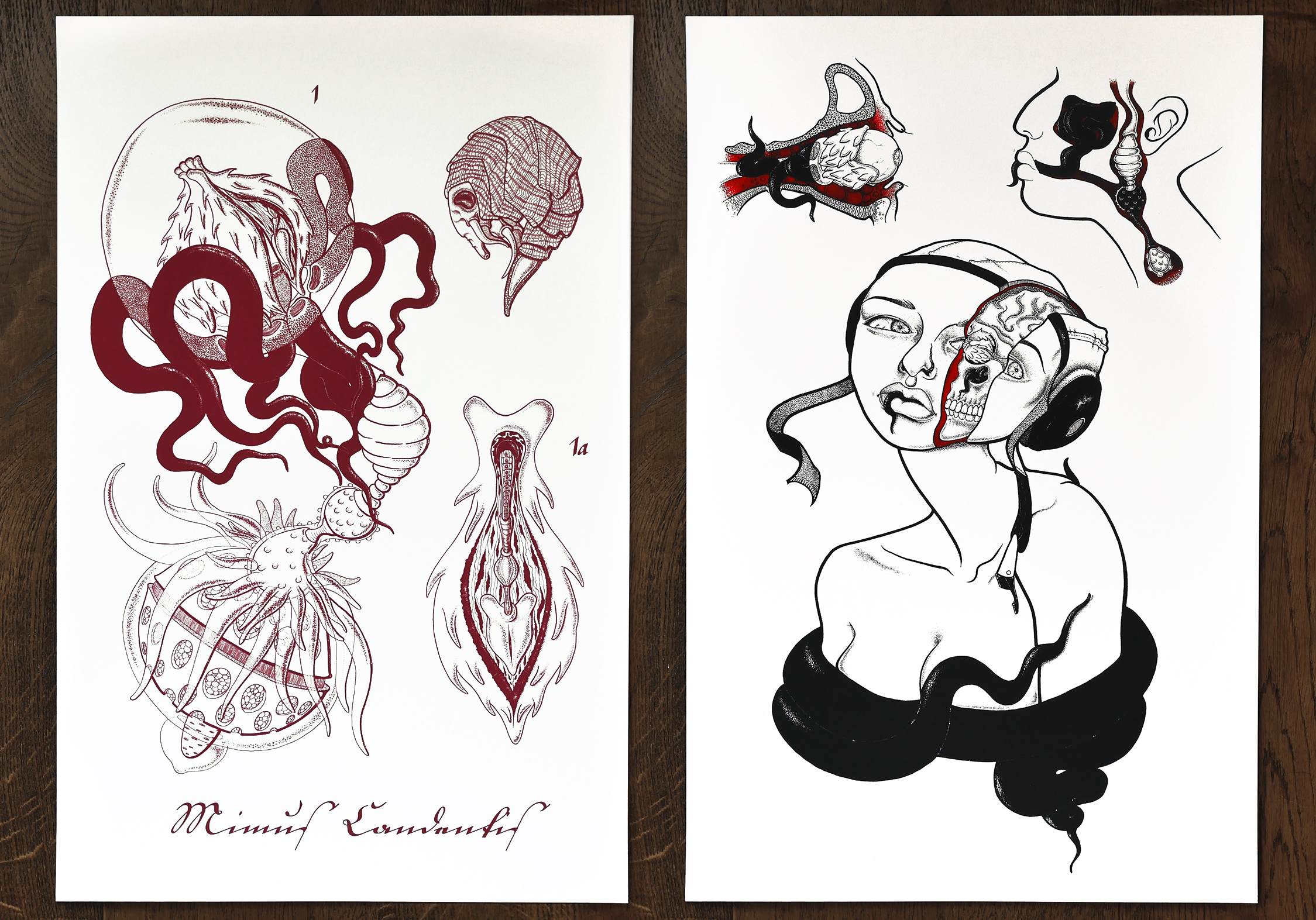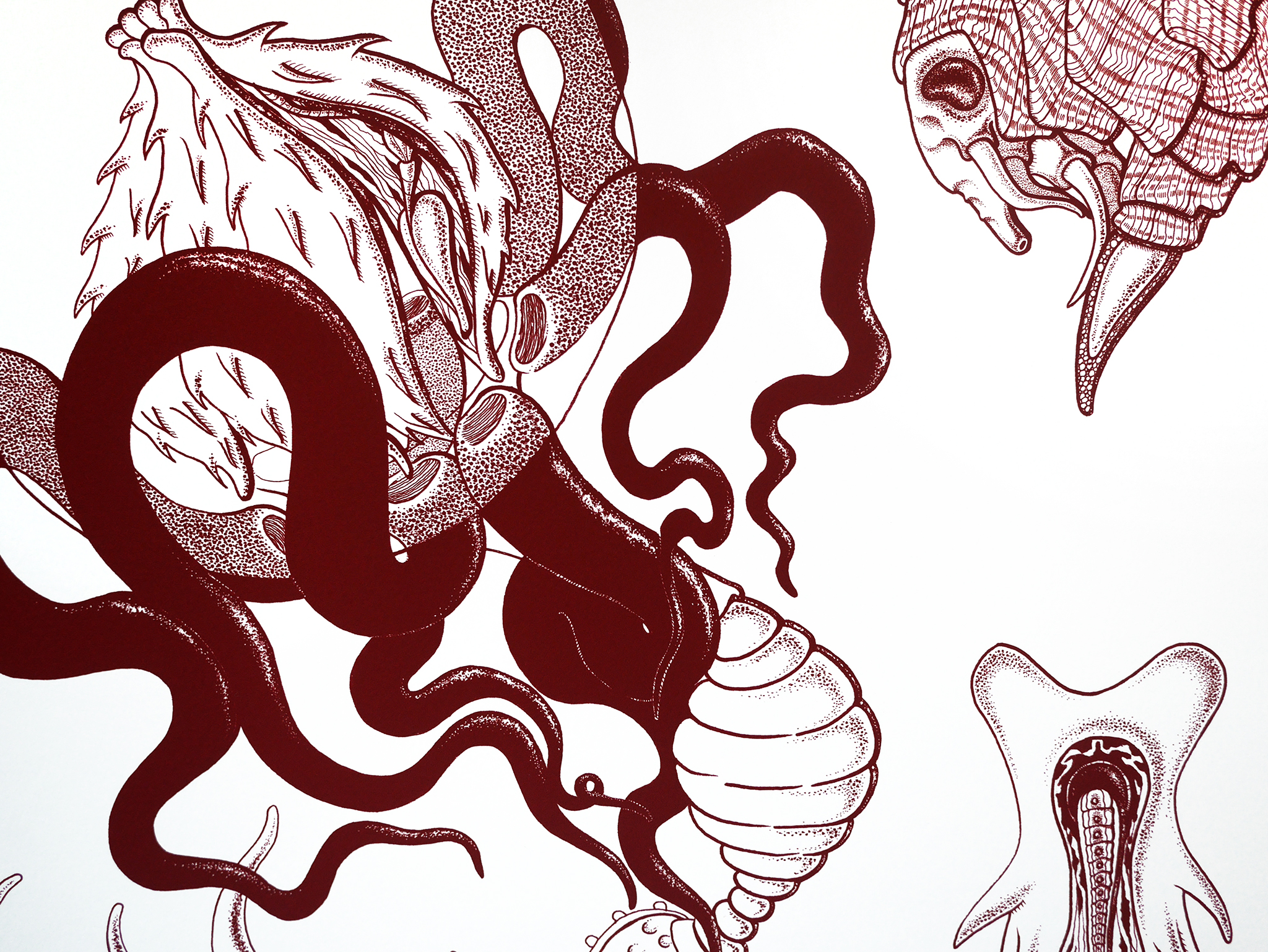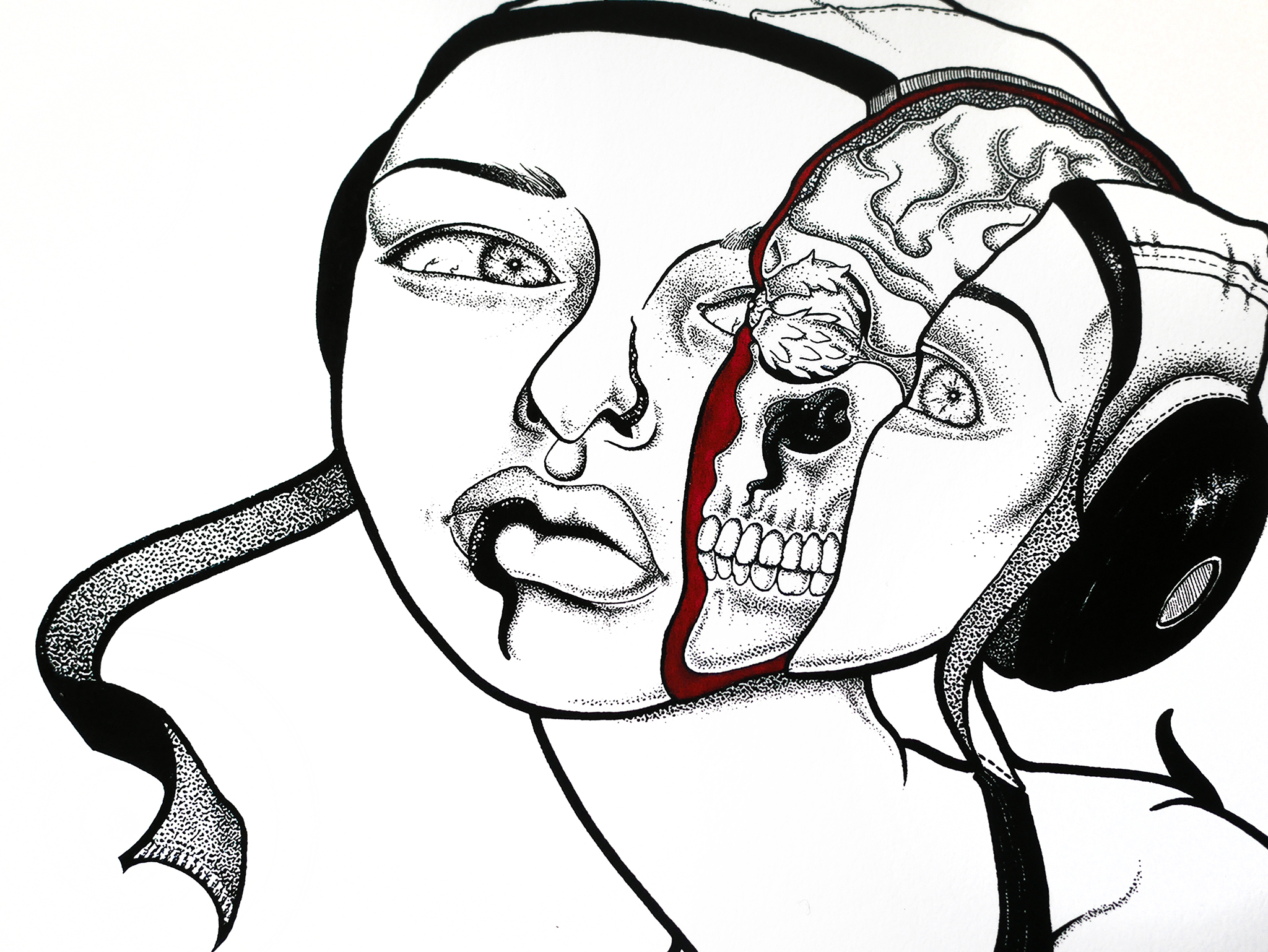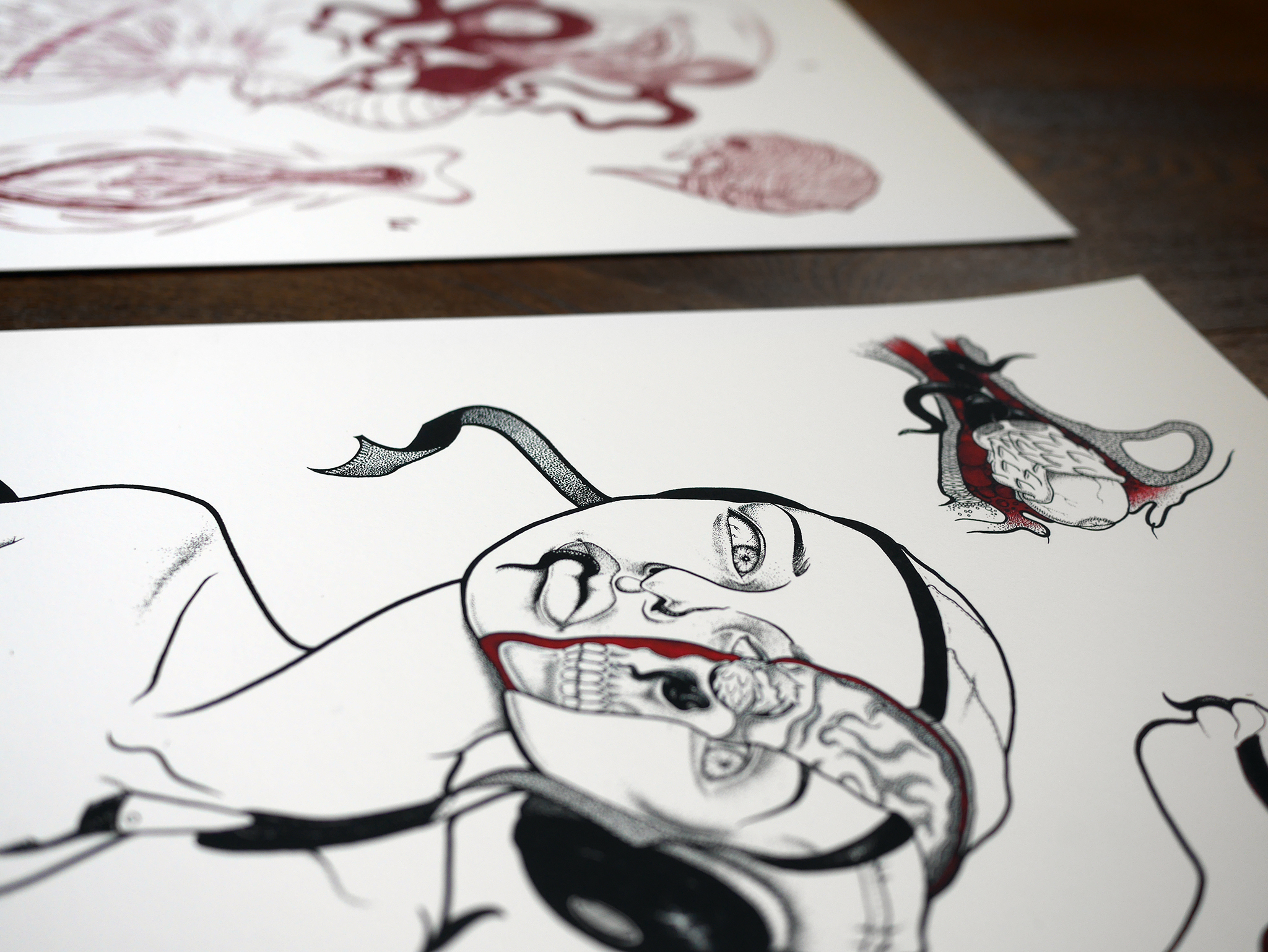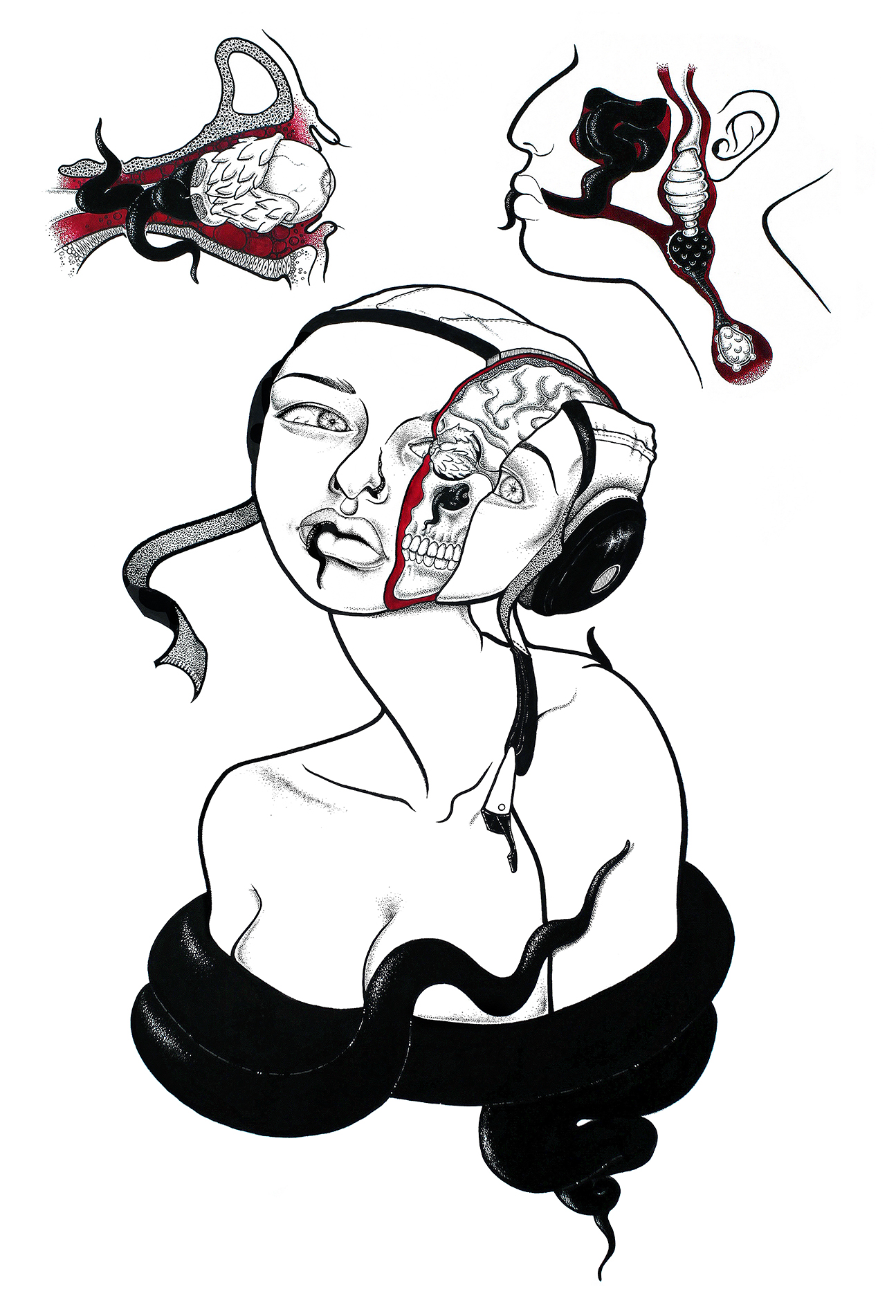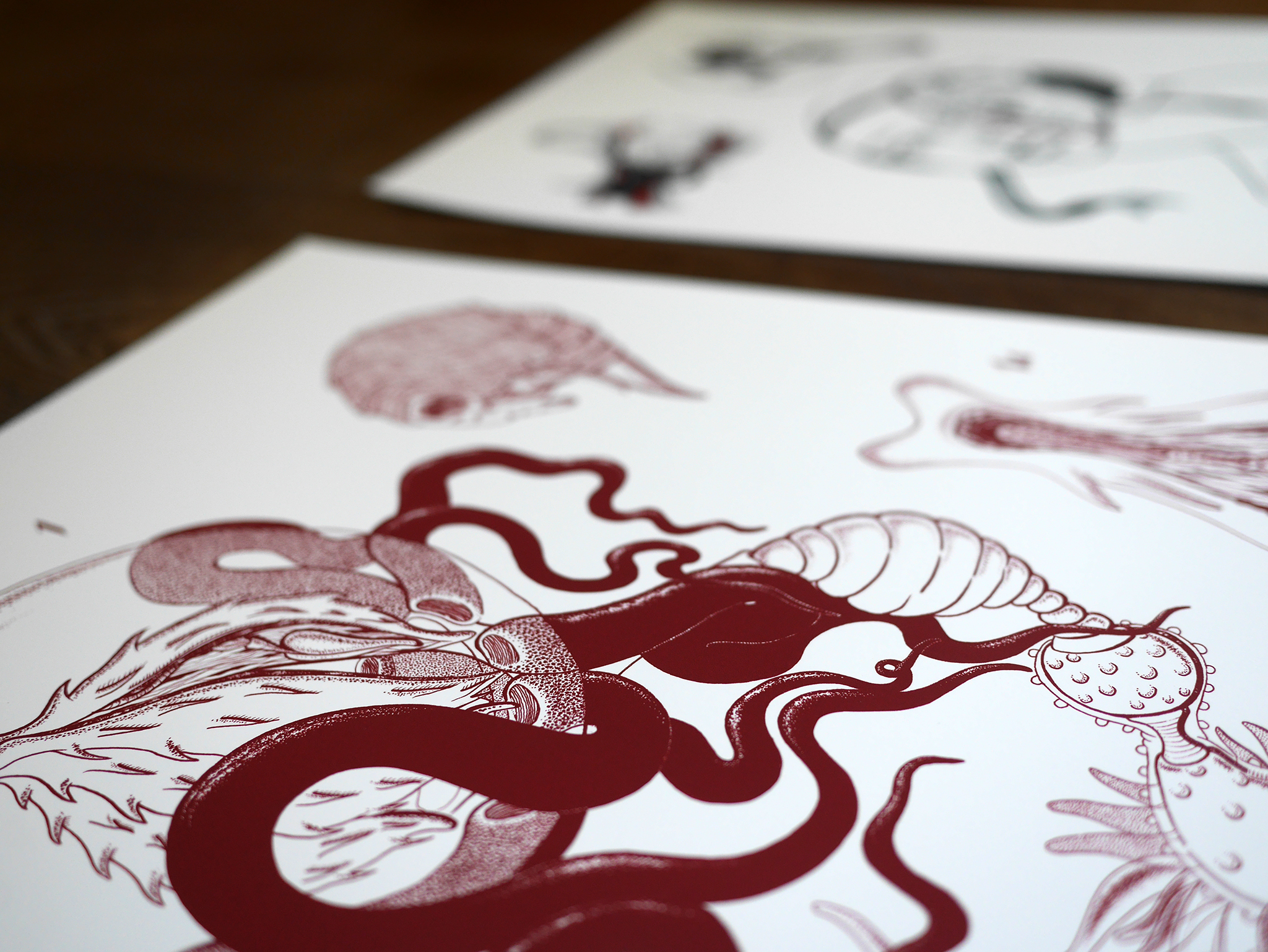The Alien Botany universe has been incubating for quite some time. Though two of its specimens took on new forms and joined you as Alien Botany wearable art, I hesitated to share their functions. Until today.
Let us begin with the cryptic Mimus candentis – a small aquatic parasite. Its armoured seedling settles on underwater rocks, where a metamorphosis takes place. Once the water-roots, egg sack and incubation chamber are formed, the armour is shed and the adolescent Mimus sets off in search of a suitable host, luring her into water with a bioluminescent bell and introducing itself through accessible cavities.
During the ripening stage, the host is unaware of the invasion while the Mimus uses her blood and oxygen to mature. Hundreds of eggs fill the sack, and three are pushed through the fully formed stem up to the incubation chamber. There, a soft pseudoarmour is grafted onto the budding seedlings by a specialised organ, manus laminarmis (1a). The pseudoarmour needs UV rays to solidify, so the bell dissolves to allow for what's to come. Next, the adult Mimus extends its tendrils along the optic nerve to infiltrate the amygdala and the hippocampus, assuming a strong, but not debilitating, influence over the internal drives of the host. With the impulse control centres conquered, the Mimus clamps onto the eye, casting the host’s gaze at the sun while the armour cures.
When the Mimus is ready to spawn, it induces acute thirst in the host, routing her to a body of water, where ripe larva seedlings are released through the ocular cavity. During this time, the host may experience dissociation, hallucinations, and euphoria.
This process repeats until the host’s resources are depleted.
Companion prints of the Mimus candentis specimen and its Interaction Table are available in the shop.

